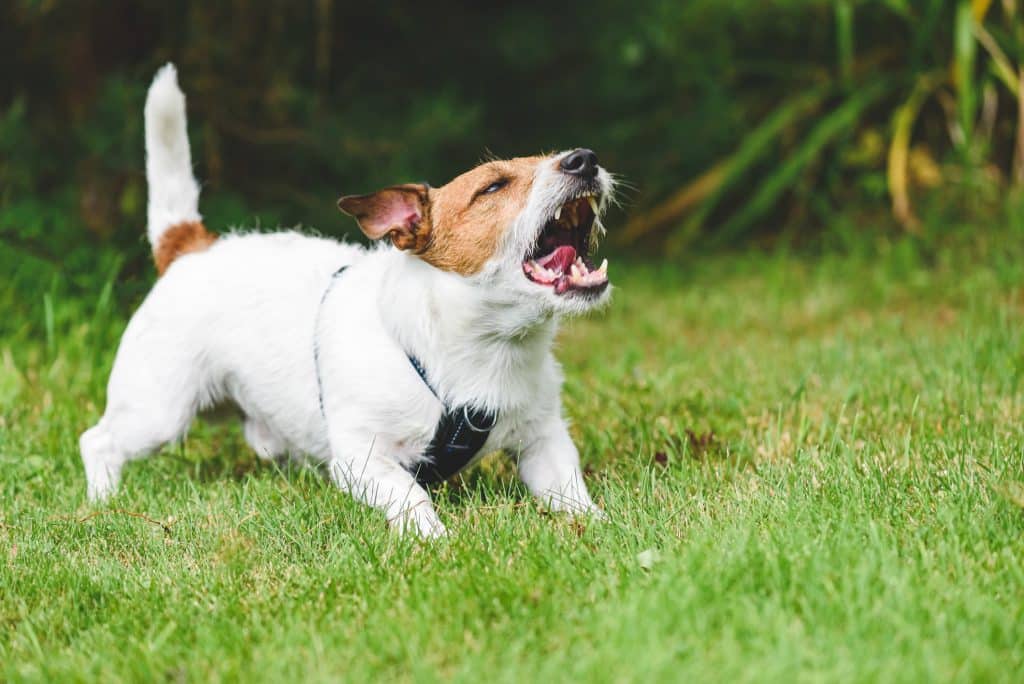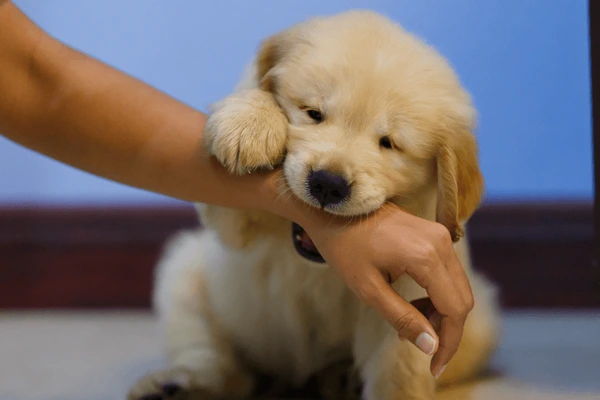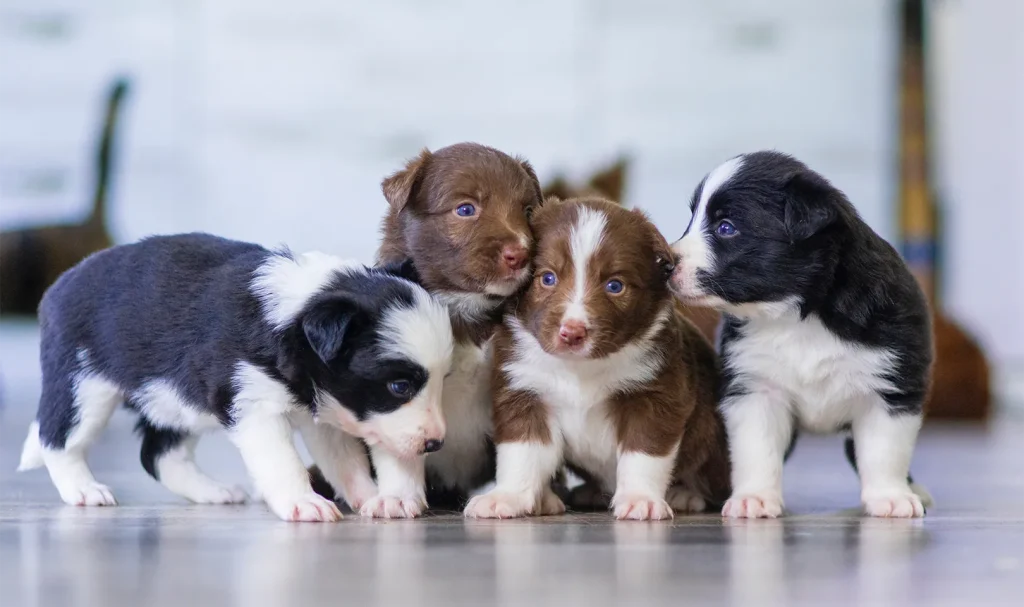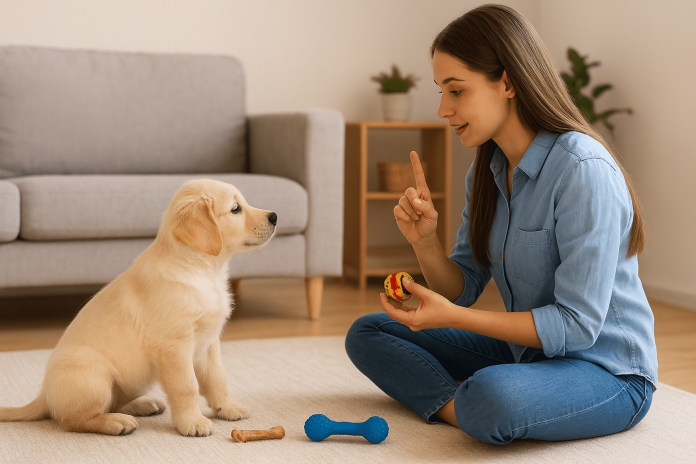Puppy training is one of the most important responsibilities of a dog owner. Those tiny barks, playful jumps, and little nips might appear adorable at first, but if left unchecked, they can quickly turn into difficult habits. Learning how to stop your puppy from biting and barking excessively helps you create a calm, confident, and well-behaved companion. Through patience, love, and consistency, you can shape your puppy’s behavior while building a relationship founded on trust and respect.
Understanding Why Puppies Bark and Bite
Before correcting your puppy’s behavior, it’s essential to understand why they bark or bite in the first place. Barking and biting are natural ways for dogs to communicate. Puppies often bite when they are teething or exploring their surroundings, while barking can be a reaction to excitement, fear, or loneliness. Excessive barking and biting, however, may signal a lack of socialization or unspent energy. Recognizing these triggers allows you to address the root cause rather than just the behavior itself, which is the first step in effective puppy training.

Start Early and Stay Consistent
The earlier puppy training begins, the better the results. Puppies are quick learners, especially when training sessions are consistent and filled with positive reinforcement. Establishing a daily routine helps your puppy understand what to expect, which naturally reduces anxiety and erratic behavior. Clear commands such as “quiet” or “no bite,” spoken calmly and repeatedly, teach your puppy to associate specific actions with desired outcomes. Rewarding them immediately when they follow instructions encourages obedience and strengthens your bond. Consistency, more than intensity, is what helps training stick.
Curbing the Biting Habit
Puppy biting is often a part of the teething process that occurs between three and six months of age. The best way to handle it is through redirection rather than punishment. When your puppy begins to nip or chew on your hand, calmly replace it with a chew toy or something safe to bite. This teaches them what is acceptable. If they bite too hard during play, a firm “ouch” or withdrawal of attention signals that their behavior was too rough. Over time, your puppy learns that gentle play keeps your attention, while biting ends it. Patience and positive reinforcement are the cornerstones of puppy training, and harsh corrections should always be avoided, as they can create fear and confusion.

Managing Excessive Barking
Barking is a dog’s natural way of expressing emotions, but when it becomes excessive, it can disturb both you and your neighbors. The key to controlling barking lies in identifying the reason behind it. Some puppies bark out of excitement when they see people, while others bark out of boredom or stress. Ignoring unnecessary barking and rewarding quiet moments teaches your dog when silence is more rewarding. The “quiet” command, spoken gently and followed by praise when your puppy stops barking, can work wonders. Ensuring your puppy receives enough mental stimulation through toys, playtime, and walks also reduces unwanted barking. Balanced activity and attention are powerful tools in any form of puppy training.

The Importance of Socialization
Socialization is one of the most overlooked yet crucial aspects of puppy training. A well-socialized puppy is less likely to react with fear, aggression, or loud barking in unfamiliar situations. Introducing your puppy gradually to new people, animals, and environments builds confidence and emotional stability. Calm interactions should always be encouraged, and positive reinforcement during these experiences helps your puppy associate new situations with comfort rather than anxiety. Early socialization ensures that your dog grows into a friendly, adaptable, and secure adult.

Exercise and Mental Stimulation
Just like humans, puppies need both physical and mental activity to stay balanced. A bored puppy often resorts to barking or biting as an outlet for pent-up energy. Regular walks, play sessions, and interactive toys keep them engaged and satisfied. Training sessions themselves act as a form of mental exercise, sharpening your dog’s focus and discipline. A well-exercised puppy tends to be calmer and more responsive to commands. Remember, energy spent productively leads to better behavior and makes puppy training much easier.
Positive Reinforcement Over Punishment
Modern puppy training emphasizes kindness and patience over punishment. Dogs respond far better to encouragement than to fear. Rewarding good behavior with treats, gentle praise, or affection reinforces positive actions and helps your puppy understand what pleases you. Shouting or physical discipline, on the other hand, can lead to fear-based behavior and damage the trust between you and your pet. Always make training a joyful experience where learning feels rewarding, not stressful.
When to Seek Professional Help
Sometimes, despite consistent efforts, a puppy may continue to bark or bite excessively. In such cases, it’s wise to consult a professional trainer or veterinarian. Persistent aggression or anxiety can sometimes indicate deeper behavioral or health issues. A qualified trainer can provide tailored strategies, while a vet can rule out any medical conditions contributing to the behavior. Seeking help early prevents small issues from becoming lifelong habits.
Common Mistakes to Avoid
Many owners unintentionally slow their puppy’s progress by making common mistakes such as inconsistency, impatience, or lack of structure. Training must be continuous and uniform across all family members. Changing rules or responding differently to the same behavior confuses your puppy and delays results. Another common error is neglecting socialization, which can lead to fear-based reactions later in life. Successful puppy training requires not just love, but also routine, patience, and empathy.
Conclusion
Puppy training is not just about discipline — it’s about communication and connection. Teaching your puppy not to bite or bark excessively takes time, but the reward is a lifelong bond with a well-behaved and emotionally balanced dog. Through patience, consistency, and positive reinforcement, your puppy learns to trust you and respond with affection and understanding. In the end, training is not only about shaping your dog’s behavior, but also about shaping a lasting relationship built on mutual respect and love.
FAQs
1. How can a young dog learn to stay calm around visitors?
Gradually introduce your pet to new people and reward calm behavior. Positive exposure helps reduce excitement and barking when guests arrive.
2. What is the best way to teach a pet not to chew on furniture?
Provide chew toys and keep the pet mentally occupied. Use mild deterrent sprays on furniture and redirect chewing to appropriate items.
3. Can consistent exercise reduce barking issues?
Yes. Regular walks, playtime, and mental stimulation help release extra energy, leading to calmer and quieter behavior.
4. Is it okay to use treats during every training session?
Yes, but moderation is key. Over time, replace food rewards with praise or affection to maintain motivation without dependency on treats.
5. How long should training sessions last for a young dog?
Short sessions of 10–15 minutes, two or three times a day, are ideal. Shorter durations keep your pet focused and prevent frustration.
6. What should I do if my pet gets scared during training?
Pause immediately and comfort them. Use a gentle voice and return to simpler commands to rebuild confidence. Never force or frighten them.
7. Can professional trainers help with behavioral problems?
Yes. Certified trainers assess the root cause of behavior and tailor techniques to your dog’s temperament, especially when home training isn’t enough.
8. Do dogs bark more when they are anxious?
Absolutely. Anxiety and boredom often trigger excessive noise. Creating a calm environment and offering toys or company helps ease the problem.
9. How important is routine in dog behavior control?
Extremely important. A consistent schedule for feeding, play, and rest helps dogs understand expectations and reduces unwanted habits.
10. What role does socialization play in training?
Socialization teaches dogs to interact positively with other animals, people, and environments. It reduces fear-based reactions and builds confidence.



